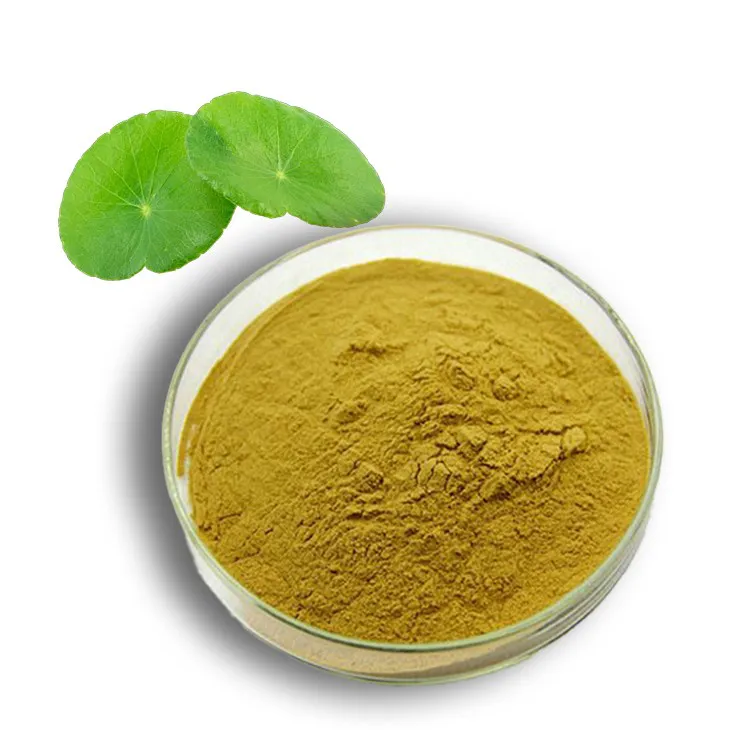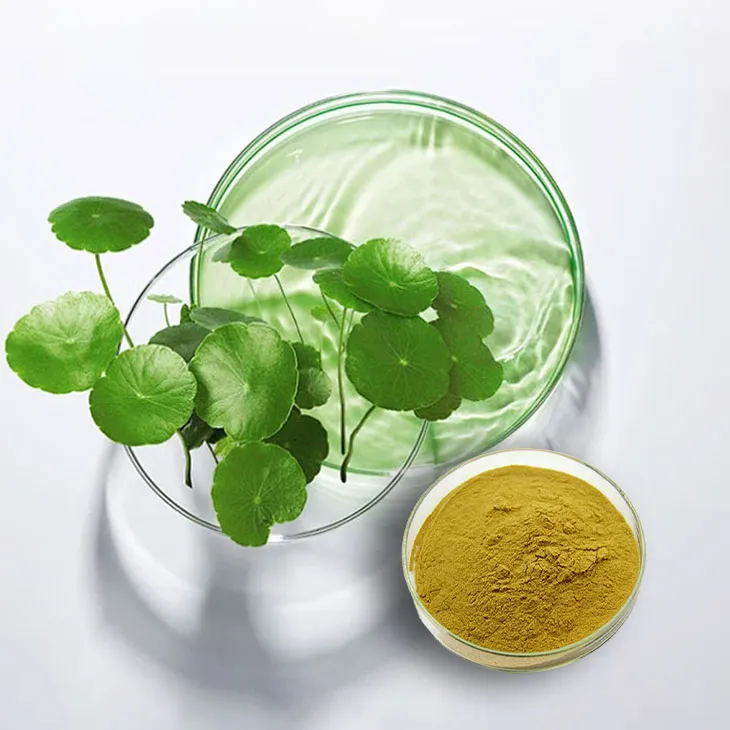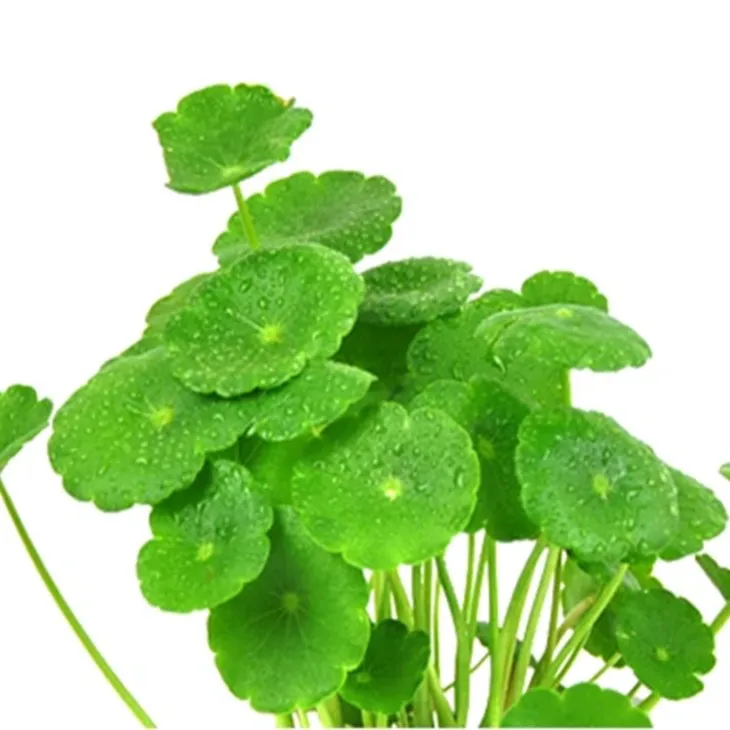- 0086-571-85302990
- sales@greenskybio.com
Centella asiatica extract: from leaves to extraction.
2024-11-12

1. Introduction
Centella asiatica, a plant with a long history of use in various fields, has drawn significant attention due to its valuable extract. The journey from its leaves to the final extraction is not only a scientific process but also holds great practical importance.

2. Harvesting of Centella asiatica Leaves
The first step in obtaining Centella Asiatica Extract is the careful harvesting of its leaves. Harvesting should be done at the appropriate time to ensure the leaves are of the best quality. This involves considering factors such as the growth stage of the plant and environmental conditions.
Skilled workers are often required to carefully pick the leaves without causing damage to the plant. This is crucial as damaged plants may produce leaves with altered chemical compositions, which could affect the quality of the final extract.

3. Pretreatment of Leaves
3.1. Removal of Impurities
Once the leaves are harvested, they need to be pretreated. The primary task in pretreatment is the removal of impurities. This can include dirt, other plant parts that may have been accidentally collected, and any foreign substances.
One common method is to wash the leaves thoroughly. However, this must be done carefully to avoid losing any of the valuable components present in the leaves. After washing, the leaves are usually dried to an appropriate moisture level.
3.2. Sorting
Sorting is another important aspect of pretreatment. Leaves may vary in size, quality, and even chemical composition. By sorting them, we can ensure that only the best - quality leaves are used for extraction. This can involve separating damaged or diseased leaves from healthy ones.

4. Extraction Techniques
4.1. Traditional Extraction Methods
There are several traditional extraction methods that have been used for Centella asiatica leaves. One of the most common is solvent extraction.
In solvent extraction, a suitable solvent is chosen based on the solubility of the desired components in Centella asiatica. Ethanol, for example, is often used as it can dissolve many of the active compounds present in the leaves. The leaves are soaked in the solvent for a certain period, and then the solvent is separated from the solid residue.
Another traditional method is maceration. In this method, the leaves are crushed and then soaked in a solvent for an extended period. This allows the solvent to penetrate the cells of the leaves and extract the valuable compounds.
4.2. Advanced Extraction Techniques
In recent years, advanced extraction techniques such as supercritical fluid extraction (SFE) have been increasingly used. SFE offers several advantages over traditional methods.
Supercritical fluids, such as carbon dioxide in its supercritical state, have unique properties. They have a high diffusivity, which allows them to penetrate the plant material quickly. Also, they can be easily removed from the extract by simply reducing the pressure, leaving behind a pure extract.
When using SFE for Centella Asiatica Extraction, the process can be precisely controlled. Parameters such as temperature, pressure, and extraction time can be adjusted to optimize the extraction of specific compounds. For example, by carefully controlling these parameters, it is possible to extract a higher concentration of triterpenoids, which are some of the key bioactive components in Centella asiatica.
5. Properties and Benefits of Centella Asiatica Extract
5.1. In Cosmetics
Centella asiatica extract has become a popular ingredient in cosmetics. One of its main benefits is its ability to enhance skin elasticity. The extract contains compounds that can stimulate the production of collagen and elastin in the skin.
Another important property in cosmetics is its wrinkle - reducing effect. It can help to smooth out fine lines and wrinkles by improving the overall texture of the skin. This is achieved through its antioxidant and anti - inflammatory properties, which protect the skin from damage caused by free radicals and reduce inflammation.
5.2. In Traditional Medicine
Centella asiatica has a long history of use in traditional medicine. For centuries, it has been used to treat various ailments. In Ayurvedic medicine, for example, it has been used to improve memory and cognitive function.
It has also been used for its wound - healing properties. The extract can promote the growth of new skin cells and accelerate the healing process of wounds. This is due to its ability to stimulate cell proliferation and angiogenesis.
5.3. In Modern Medicine
Modern medicine is also exploring and verifying the benefits of Centella asiatica extract. Research has shown that it may have potential in treating neurological disorders. For example, some studies suggest that it can protect neurons from damage and improve nerve regeneration.
It may also have applications in cardiovascular health. Some components of the extract have been shown to have anti - platelet and anti - inflammatory effects, which could potentially be beneficial in preventing heart diseases.
6. Quality Control and Standardization
To ensure the effectiveness and safety of Centella asiatica extract, quality control and standardization are essential.
One aspect of quality control is the identification and quantification of the active compounds in the extract. This can be done using techniques such as high - performance liquid chromatography (HPLC). By accurately determining the levels of key compounds such as asiaticoside, madecassoside, and asiatic acid, it is possible to ensure that the extract meets the required quality standards.
Another important factor is the control of contaminants. The extract should be free from harmful substances such as pesticides, heavy metals, and microbial contaminants. Regular testing for these contaminants is necessary to ensure the safety of the extract.
7. Conclusion
The journey from Centella asiatica leaves to extraction is a complex and multi - step process. Each step, from harvesting to extraction and quality control, plays a crucial role in obtaining a high - quality extract. With the continuous development of extraction techniques and the in - depth exploration of its properties and benefits, Centella asiatica extract is likely to find even more applications in various fields in the future.
FAQ:
What are the main pretreatment methods for Centella asiatica leaves before extraction?
The main pretreatment methods usually include washing the leaves thoroughly to remove dirt, debris and other visible impurities. Then, drying the leaves to an appropriate moisture content. Sometimes, cutting or grinding the leaves into smaller pieces may also be part of the pretreatment process to increase the surface area for better extraction in the subsequent steps.
Why is supercritical fluid extraction considered an advanced technique for Centella asiatica extract?
Supercritical fluid extraction is considered advanced because it has several advantages. Supercritical fluids have properties between liquids and gases, which allows for better penetration into the plant material. It can selectively extract the desired components from Centella asiatica leaves with high efficiency. Moreover, it often operates at relatively low temperatures, which helps to preserve the bioactive components in the extract as heat - sensitive compounds are less likely to be degraded compared to some traditional high - temperature extraction methods.
What are the specific beneficial effects of Centella asiatica extract on skin elasticity in cosmetics?
Centella asiatica extract contains active compounds such as asiaticoside, which can stimulate the production of collagen and elastin in the skin. Collagen provides structural support to the skin, and elastin is responsible for its elasticity. By promoting the synthesis of these two important proteins, Centella asiatica extract helps to improve skin elasticity, making the skin look firmer and more youthful.
How has modern medicine verified the traditional medical uses of Centella asiatica?
Modern medicine has used various scientific methods to verify the traditional uses. Laboratory studies have been conducted to analyze the chemical composition of Centella asiatica extract. Clinical trials on human subjects or animal models have also been carried out. For example, to test its effectiveness in treating certain diseases, researchers measure specific biomarkers related to the ailment before and after the administration of Centella asiatica extract. Pharmacological studies are used to understand how the bioactive compounds in the extract interact with the body's cells and physiological processes.
Can Centella asiatica extract be used in other industries apart from cosmetics and traditional medicine?
Yes, it can be potentially used in other industries. In the food industry, it may be explored as a functional ingredient due to its potential health - promoting properties. In the pharmaceutical industry, apart from traditional medicine applications, it could be further developed into new drugs or drug formulations. Additionally, in the nutraceutical industry, Centella asiatica extract could be used to produce dietary supplements.
Related literature
- Centella asiatica: A Review on Its Phytochemistry, Pharmacological and Toxicological Properties"
- "The Therapeutic Potential of Centella asiatica Extract in Skin Health"
- "Centella asiatica: Traditional Uses and Modern Research"
- ▶ Hesperidin
- ▶ citrus bioflavonoids
- ▶ plant extract
- ▶ lycopene
- ▶ Diosmin
- ▶ Grape seed extract
- ▶ Sea buckthorn Juice Powder
- ▶ Beetroot powder
- ▶ Hops Extract
- ▶ Artichoke Extract
- ▶ Reishi mushroom extract
- ▶ Astaxanthin
- ▶ Green Tea Extract
- ▶ Curcumin Extract
- ▶ Horse Chestnut Extract
- ▶ Other Problems
- ▶ Boswellia Serrata Extract
- ▶ Resveratrol Extract
- ▶ Marigold Extract
- ▶ Grape Leaf Extract
- ▶ blog3
-
High purity olive leaf extract
2024-11-12
-
Lavender oil extraction method
2024-11-12
-
100% organic virgin sea buckthorn fruit oil
2024-11-12
-
Lotus leaf extract powder factory in China
2024-11-12
-
China aged garlic extract supplier
2024-11-12
-
Deer antler extract powder manufacturer
2024-11-12
-
Saw palmetto extract vs whole herb
2024-11-12
-
Lavender Extract
2024-11-12
-
Green coffee bean Extract
2024-11-12
-
Aguaje Extract
2024-11-12
-
Nutmeg Extract
2024-11-12
-
Red Wine Extract
2024-11-12
-
Epimedium extract powder
2024-11-12
-
Hericium erinaceus extract powder
2024-11-12
-
Bitter Melon Extract
2024-11-12
-
Yohimbine Bark Extract
2024-11-12
-
Bamboo Leaf extract
2024-11-12





















